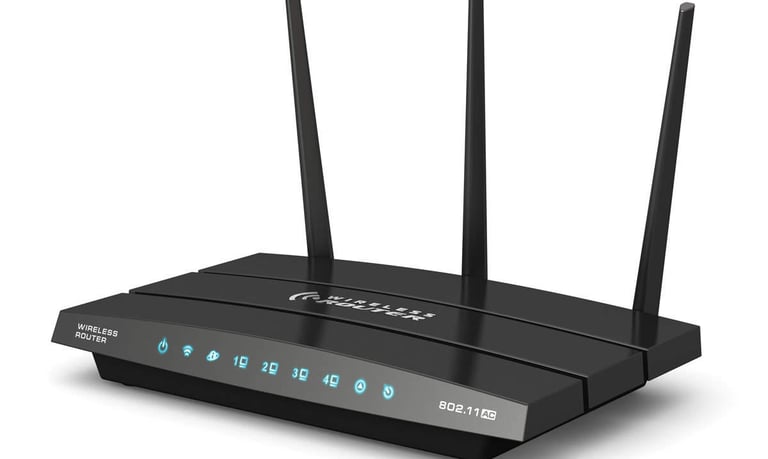
The Evolving Landscape of Home Broadband in Malaysia
INNOVATION


The evolving Malaysian home broadband landscape: trends, government initiatives (JENDELA, Starlink), and the future of connectivity.
The Evolving Landscape of Home Broadband in Malaysia: A Comprehensive Analysis of Challenges, Trends, and Future Prospects
The Malaysian home broadband industry is at a pivotal juncture, marked by a confluence of challenges and opportunities that are reshaping its trajectory. While once a booming sector, the traditional fixed broadband model is experiencing a notable decline, driven by a complex interplay of factors ranging from infrastructure costs and market saturation to shifting consumer preferences and the rising cost of living. This in-depth analysis explores the intricacies of these challenges, examines the emerging trends that are redefining the industry, delves into the government's proactive measures to enhance connectivity, and contemplates the future prospects for home broadband in Malaysia.
Declining Revenue and Subscriber Base: A Glimpse into the Numbers
A comprehensive examination of publicly available data from major broadband providers in Malaysia reveals a disconcerting trend of declining revenue and subscriber numbers. Telekom Malaysia, the nation's largest fixed broadband provider, reported a 5.1% decrease in its broadband revenue in the second quarter of 2023. This decline underscores the growing challenges faced by traditional providers in retaining their customer base amid intensified competition and evolving consumer preferences.
Similarly, Maxis, another prominent player in the market, experienced a 2.4% reduction in its fixed broadband subscriber base during the same period. This contraction highlights the growing popularity of mobile broadband alternatives, which offer affordability, convenience, and flexibility, particularly in light of the rising cost of living.
Challenges Facing the Industry: A Multifaceted Landscape
1. Capital-Intensive Infrastructure Deployment: The expansion and maintenance of fixed broadband infrastructure, particularly in rural and underserved areas, remain a formidable challenge due to the substantial capital expenditure involved. Laying fiber optic cables, establishing distribution networks, and ensuring last-mile connectivity require significant investments, often deterring providers from expanding their reach and perpetuating the digital divide between urban and rural communities.
2. Return on Investment (ROI) Hurdles: Achieving a satisfactory return on investment (ROI) is a perennial challenge, particularly in regions with low population density. The limited number of potential subscribers in these areas makes it difficult to recoup the initial capital outlay and sustain operational costs. As a result, extending services to underserved regions becomes financially unviable for many providers, hindering universal broadband access.
3. Intensified Competition: The Malaysian broadband market has become increasingly competitive, with a proliferation of players vying for market share. This intensified rivalry has triggered price wars, aggressive marketing tactics, and a race to the bottom in terms of pricing. While this benefits consumers in the short term, it erodes profit margins for providers and hampers their ability to invest in network upgrades and innovation.
4. Converging Services and Evolving Consumer Preferences: The convergence of telecommunication services, where voice, data, and video are bundled into comprehensive packages, has disrupted the traditional broadband model. Consumers are increasingly gravitating towards mobile plans that offer ample data allowances for their internet needs, diminishing the demand for standalone home broadband connections. This shift in consumer behavior is further exacerbated by the rising cost of living, as households seek ways to optimize their spending.
5. Impact of Rising Cost of Living: The escalating cost of living in Malaysia has prompted many consumers to re-evaluate their spending patterns, including their broadband subscriptions. Downgrading to cheaper plans or even canceling subscriptions altogether has become a common practice for households seeking to reduce expenses. This trend poses an additional challenge for broadband providers, who must find ways to maintain affordability while ensuring the quality and reliability of their services.
6. Homogenization of Service Offerings: In recent years, there has been a growing trend towards homogenization of broadband packages across different providers. Many consumers perceive little differentiation between the offerings, leading them to prioritize the cheapest option. This lack of differentiation further intensifies competition and makes it difficult for providers to attract and retain customers based on unique value propositions.
Government Initiatives: Bridging the Digital Divide
Recognizing the challenges and opportunities in the broadband sector, the Malaysian government has taken proactive measures to enhance connectivity and ensure equitable access for all citizens. The National Digital Network (JENDELA) plan, a comprehensive initiative launched in 2020, aims to achieve 98% 4G mobile broadband coverage and 7.5 million premises passed with fiber connectivity by 2025. This ambitious plan encompasses various strategies, including infrastructure development, spectrum allocation, and regulatory reforms, to accelerate the deployment of high-speed broadband across the country.
Moreover, the government's decision to allow Elon Musk's Starlink satellite internet service to operate in Malaysia represents a significant step towards bridging the digital divide in underserved areas. Starlink's low earth orbit (LEO) satellite constellation has the potential to provide high-speed internet access to even the most remote regions, overcoming the limitations of traditional terrestrial infrastructure.
The Future Outlook: A Hybrid and Dynamic Landscape
The future of home broadband in Malaysia is likely to be characterized by a hybrid model, where a combination of fixed broadband, mobile broadband, fixed wireless access (FWA), and satellite internet coexists to cater to diverse needs and geographical constraints. Fixed broadband will remain a vital component, especially in urban areas where demand for high bandwidth and low latency applications is prevalent. However, the expansion of 5G networks, the increasing affordability of mobile data plans, and the emergence of satellite internet services like Starlink will provide viable alternatives for consumers in different regions and with varying requirements.
Broadband providers are also diversifying their businesses to adapt to the changing landscape and explore new revenue streams. This includes venturing into renewable energy, digital services, cybersecurity, and cloud solutions. By expanding their portfolios beyond traditional broadband offerings, providers can mitigate the impact of declining revenue and position themselves for sustainable growth in the digital age.
In conclusion, the Malaysian home broadband industry is undergoing a transformative period, marked by a confluence of challenges and opportunities. While the decline in traditional fixed broadband adoption presents a significant hurdle, the industry is responding with innovation, diversification, and a commitment to providing reliable and affordable connectivity for all Malaysians. The government's proactive measures, coupled with the emergence of alternative solutions like 5G and Starlink, are paving the way for a more inclusive and dynamic broadband landscape. As technology continues to advance and consumer preferences evolve, the industry must remain agile and adaptable to thrive in this ever-changing environment. The future of home broadband in Malaysia is poised for exciting developments, and the stakeholders involved must collaborate to ensure that all Malaysians can reap the benefits of a connected society.
